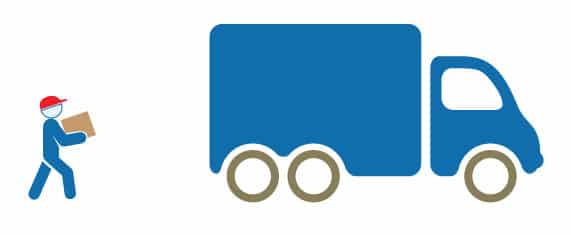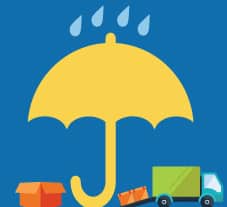Customers return at least 30% of products ordered online—compared to 8% of those bought in brick-and-mortar stores.
But 92% of customers will buy again if the return process is easy.
If you’re selling online, it’s inevitable—you have to undertake the hassle of online returns. While you can’t completely eradicate returns, you can learn how to control them.
Keep reading to learn about the affects product returns have on a business, why customers typically return products, and how to reduce product returns in your online business.
The Truth About E-Commerce Returns
Billions of dollars of goods are returned each year, which causes retailers to lose a third of their revenue to returns each year. Not even an e-commerce giant like Amazon can withstand this trend.
It’s easy to see how the costs add up when you consider the cost of:
- Providing a postage-paid return label
- Processing the return
- Shipping a replacement product or issuing a refund
- Losing repeat business to unhappy customers
- Managing stock levels when your inventory is in transit
- Re-packaging, re-stocking, disposing of or destroying returned products
Investments in supply chain upgrades and return technologies hit your bottom line. However, there are ways you can leverage returns to support the health of your e-commerce store and keep your customers happy.
While it’s brutal to give refunds you sell and pay for return shipping, in addition, returns are an important service to offer your customers. Like it or not, returns are a core part of your customer retention plan.
How Much Will Returns Cost Your Business?
According to Statista, online retailers will lose a collective $550 billion in returns this year.
To understand the hit to your bottom line, take the average 30% product return rate and multiply that by your expected sales volume this year. Don’t forget to consider the cost of re-stocking, return shipping, and lost or damaged merchandise.
Ouch.
If you have a history of your past e-commerce returns, determine the return rate for your business. If it’s lower than 30%, you’re doing better than most e-commerce businesses.
However, if it’s higher, it’s time to execute strategies to reduce returns. Add this to the key performance indicators (KPIs) you analyze in your business. Understanding how returns impact your business will help your business grow.
5 Ways to Reduce Product Returns
As you’re considering the costs associated with online returns, include the opportunity cost of return business when you make returns difficult.
If customers have a terrible return experience, they’re unlikely to buy from your store again.
It’s essential to offer easy returns, but it’s also vital to make an effort to reduce your number of returns due to common causes. Some of the most common reasons why customers request returns include:
- Incorrect orders
- Sizing issues
- Damaged deliveries
- Products failing to meet expectations
Considering these reasons, let’s take a look at five ways you can reduce e-commerce returns.
1. Perfect Your Returns Policy
Your e-commerce returns policy should be easy to read and easy to access on your website.
Whether it’s a clearly laid out webpage or an FAQ section, you should include links to permanent information that make your policy easy to find on your website and mobile.
Presenting clear return information will build trust with your customers. Transparent policies leave less room for frustration as customers search for when and how to return products—plus, you’ll have fewer customers flooding your call center about returns.
To determine what works for your business, you may have to participate in some trial and error with return policies. Sometimes you may have to build on the experience of others.
Visit your favorite e-commerce websites and take some tips from them. Study their policies and take inspiration from the parts you like. Use this inspiration to craft your own return guidelines.
Make It Easy for Customers to Access Return Labels
Consider providing an online customer portal for customers that makes accessing and printing labels easy for your customers. They should be able to log in, select the item they wish to return, and print a return label in one click.
A more straightforward return process helps your customers submit returns more efficiently. This produces less hassle for them and provides a quicker turnaround for you. By allowing your customers to return a product promptly, you will spend less time with the reduced inventory. This way, you can get your products into another person’s hands more quickly.
Providing an online returns process also prevents return fraud. A customer may try to take advantage of your returns policy by claiming that things are in the return box, but they’re not. Other customers may just be confused.
To work through these issues, generate a return list for your customer that they can print and put into the box with their returns. Asking them to include a list will keep everyone honest and make it easier for your fulfillment staff to determine whether a return is in order.
2. Write Detailed Product Descriptions
While most manufacturers will provide product descriptions, you should avoid using them on your website.
Take the time to describe each item you sell. Be so descriptive that your customers can practically feel the products through their screens. Talk about your products in appealing ways—as if you were selling it face-to-face. However, keep the copy natural to avoid exaggerations or “salesy” language.
Be clear and detailed about the size, the fit, the material, and everything else. If you use models to showcase your products, share their height, weight, and other dimensions so that customers can understand the product fit.
For technical products, specific information is required. Customers will be searching for particular attributes. Exaggerations can come back to bite you. For example, your customer may be looking for a small television to fit in a specific spot. Don’t describe a TV as big if it isn’t.
3. Display Multiple Product Images
23% of e-commerce product returns are due to inaccurate descriptions or photos of products.
High-quality photos provide customers with detailed views and several angles. These visuals go a long way in bridging the gap between a customer’s expectations and the reality of a product.
While photos speak volumes, avoid misleading your customers. Ensure that your photos aren’t heavily edited and don’t inaccurately represent what you’re selling.
4. Use Product Reviews and Customer Feedback to Your Advantage
It’s essential to regularly review customer inquiries to identify frequently asked questions. Using a question and answers module in your product pages allows visitors to ask directly for additional details about the product, and previous customers to contribute by answering these publicly.
Not only do product reviews and questions aid in SEO and sales benefits, but they empower your customers to make well-informed decisions—which lead to fewer buyer regrets.
You should be doing more than paying attention to customer feedback—you should encourage it. On return forms, add tick boxes that will help flag product issues. Ask your customer if the product looks different in images or seems larger or smaller than expected. Then, you can take note and review your product listings to determine whether updates need to be made.
You can also offer your customers incentives for reviewing your products, such as a discount off of their next purchase.
5. Package and Ship Products Properly
Check your packaging methods.
Some damages will be one-off accidents, but patterns indicate a problem that can cost you dearly. Maybe you need to upgrade from tissue paper to a bag or box or add extra cushioning to protect your products.
If you have unsatisfied customers returning items because they were damaged in transit, it’s time to review your delivery packaging. Is dinnerware arriving chipped? Are clothing items arriving wrinkled? Re-evaluate how you package your products to see if you can make your orders more attractive upon arrival.
The way your products are packaged speaks volumes about your company. Thoughtful packaging shows your customers that you have packed their items with TLC. Using a fulfillment company like Fulfullrite will help with this.
Using an e-commerce fulfillment service will free your hands to focus on your business’s growth instead of the challenges you face with order fulfillment.
Take These Steps to Avoid Product Returns
While sometimes a customer returns a product for genuine problems, many times, they choose to return due to other, preventable issues. Do whatever you can to prevent product returns from your end, as reducing returns even by a slight margin will save you in operational costs.
Put these online business tips into practice to reduce product returns on your e-commerce store.
To maximize the impact of these strategies, schedule regular meetings with stakeholders and team members, and assign action items and objectives. Make a plan to incorporate your returns prevention plan in a significant way.
Bio
Jimmy Rodriguez is the COO and co-founder of 3dcart, an eCommerce software to build SEO-friendly online stores. He’s dedicated to helping internet retailers succeed online by developing digital marketing strategies and optimized shopping experiences that drive conversions and improve business performance.
You’ve done everything by the book. Your Kickstarter campaign is almost ready to launch.
You made a great product. Built an audience. Set up a campaign page.
But how do you ship it?
We put this checklist together to help you get started. It's free.





